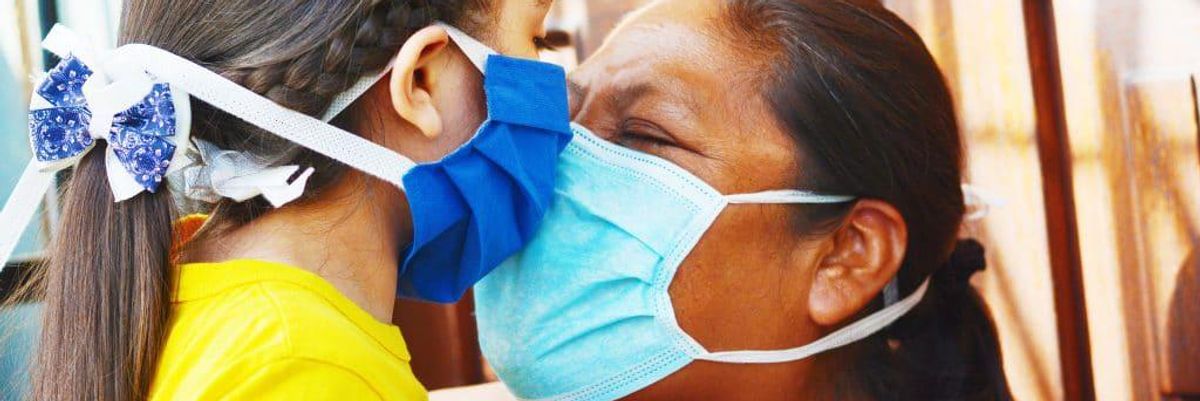CBS News Taps All Latinx Team For Latest Special, Pandemia: Latinos in Crisis

María Elena Salinas is happy that she’s doing exactly what she wants to do in the new chapter of her career. The award-winning journalist told TVNewser that she left as the longest-running anchor at Univision in 2017 to tell Latino stories to a new audience.
“We feel as a Latino community that we’re sometimes ignored by our government and then also ignored by mainstream media, so I thought this was a great opportunity to get more and more accurate coverage of the Latino community and I’m excited for that opportunity,” Salinas said to TVNewser.
In her new role as a contributor to CBS News, Salinas anchors an hour-long special called Pandemia: Latinos in Crisis that takes an in-depth look at how the COVID-19 pandemic has disproportionately affected the Latino population. It airs at 6 p.m. PT on Sunday July 19 on CBSN news streaming network and is also available to stream online at cbsnews.com/pandemia and on YouTube. It’s the first CBS special dedicated to stories about Latinos by Latinos.
“It was important to have an all Latino staff because of the cultural relevance the group brought to the stories that would be done,” Salinas said in a recent email interview with Luz Collective.
Salinas said that as the pandemic raged on, it became clear that the most affected were people of color. According to the Center for Disease Control and Prevention (CDC), Latinos are four times more likely to be hospitalized from the coronavirus than the white population. “CBS news executives made a conscious decision to go beyond daily news stories and do more in-depth coverage of these communities,” Salinas said.
With that, the first COVID-19 special called COVID-19: Black America’s Fightpremiered on April 22 with a partnership with BET News. Kim Godwin, Executive V.P. of News and Lorna Jones, CBS News Washington Deputy Bureau Chief who was then overseeing the coronavirus coverage, came up with the idea to produce the Latino-focused special.
Go behind-the-scenes of the new @CBSNews special, #PandemiaCBS, with @MariaESalinas' interview with @tvnewser: "This is the first time that CBS News has put on a special of this type with a complete team of Hispanic journalists." https://www.adweek.com/tvnewser/maria-elena-salinas-on-moving-from-univision-to-cbs-and-spotlighting-the-pandemics-effect-on-latinos-in-new-cbsn-special/448358/\u00a0\u2026pic.twitter.com/9ePH2FX3Bj— CBS News PR (@CBS News PR) 1595009723
CBS News Content Manager Luis Giraldo was enlisted to oversee the project. “It was natural that he would put together a team of Latino journalists that work in front and behind the cameras to work on it,” Salinas said.
The seven on-air correspondents, including Salinas, are Latino. The rest of the team including producers, editors, photographers, coordinators, researchers and bookers, is majority Latino. They all contribute in selecting what stories to tell. Salinas and Giraldo assembled the initial list of crucial topics with the rest adding their suggestions and names of people to profile.
“It was very exciting when we had our first zoom meeting with all the Latino journalists at CBS, you could feel the pride and enthusiasm that we all felt for the project,” Salinas said. “We wanted to make sure all angles were covered and to have as many voices as possible included, especially the ones that are normally not covered by mainstream media, such as Dreamers, immigrants in detention centers, farm workers.”
This news special features stories about the essential workers like the farm workers who continue to provide goods and services during the pandemic and with Immigration and Customs Enforcement (ICE) detainees who share their fears of contracting the virus in detention. Javier Quiroz Castro shares his story working as a nurse and is one of the more than 200,000 Deferred Action for Childhood Arrivals (DACA) recipients that are essential workers on the frontlines.
There are also interviews with Latino leaders and advocates that are providing assistance, including actress Eva Longoria, activist Dolores Huerta and New York State Assemblywoman Catalina Cruz.
It took the production team about eight weeks to produce the special. Most of the staff worked on the interviews and film shoots, writing and editing between their other stories while maintaining proper health precautions. The reporters wore masks and kept a social distance during the few in-person interviews, and other interviews were conducted through video conferencing to reduce the risk of spread. “It wasn’t easy because the staff was working on their daily coverage of the news under very difficult conditions precisely because of the limitations the pandemic poses,” Salinas said.
Salinas said the production staff is very happy that it’s available for everyone to see. “[Everyone] hopes it will make a difference by not only shining a light on the plight of Latinos during these difficult times and the contributions they make as essential workers, but hoping it will lead to change,” Salinas said. “We all hope this will be the first of many projects to come focusing on the Latino community.”
Pandemia: Latinos in Crisis airs at 6 p.m. PT on Sunday, July 19 on CBSN news streaming network and is also available to stream online at cbsnews.com/pandemia and on YouTube.
- Las Patronas de La Bestia: A Brief History ›
- Latino Voters Sent a Message: Trump is No Longer Welcome in the White House ›


 Photo by
Photo by  Photo by
Photo by  Photo by
Photo by  Photo by
Photo by  Photo by
Photo by  a group of monarch butterflies on a treePhoto by
a group of monarch butterflies on a treePhoto by 

